Lessons from the NFL, Adidas, Harley Davidson and others
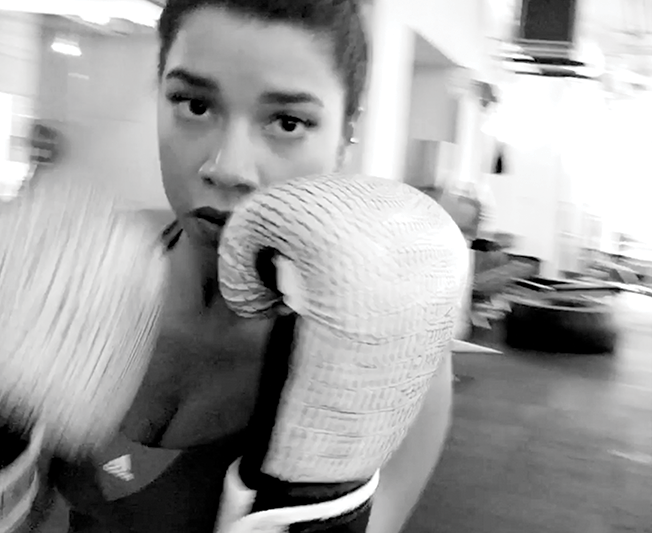
Hannah Bronfman was featured in Adidas’ “Here to Create” campaign. Instagram: hannahbronfman
It may have been an unexpected sight to some when 72andSunny rolled out the latest commercials for Adidas, featuring more than a dozen women—including famous faces like socialite Hannah Bronfman, basketball star Candace Parker and supermodel Karlie Kloss. While it’s certainly not—or shouldn’t be—a novel move to produce 13 ads centered around the athleticism of a group of women and how it plays into their daily lives, the effort actually embodies a major shift happening in marketing when it comes to gender—in regard to whom brands are targeting and how they’re doing it.
Adidas‘ goal is a simple one: It wants to grow its women’s business. And that means creative work and media spending that used to be about men for the most part are increasingly targeting female audiences. “For years, there was the old adage that if you advertised to men, the women would come—but if you advertised to women, the men would stay away,” notes Kim Getty, president of Deutsch LA. “That doesn’t hold true anymore. Men are more comfortable with women being part of the brand tribe.”
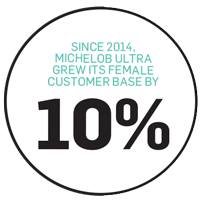
The marketers behind the brands that have worked to dispel that “old adage” admit there wasn’t a lightning-bolt moment when their brand—be it a maker of sports apparel, beer or motorcycles—decided to pay more attention to women. Most will tell you that they’ve always spoken to women but are now working to make their ads more inclusive as the brands have modernized.
Their timing is perfect. Not only are gender lines blurring but product and marketing distinctions according to gender couldn’t, for the large part, be more out of fashion. “In a world where gender differences are so slight today, old, traditional thinking of who your target audience is is very antiquated,” explains Marshal Cohen, NPD Group’s chief retail industry analyst.
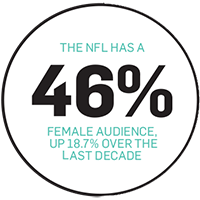
Including women in a marketing conversation once limited largely to men comes at a time when the purchasing power of women is estimated at anywhere from $5 trillion to $15 trillion annually, per Nielsen data. And it’s growing. Fleishman–Hillard projects that over the next decade, women will account for two-thirds of consumer wealth in the U.S. Says Cohen: “The ability to reach the female market in what has traditionally been a predominantly male market represents probably the biggest growth opportunity ever for most products.”
It’s no wonder, then, that macho brands are going after the female market. Here are five ways they’re doing it.
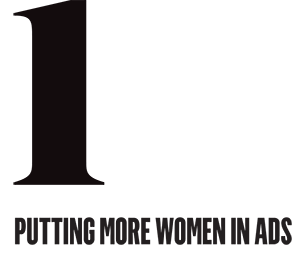
An examination of recent campaigns from male-skewing brands ranging from Coors Light to Under Armour shows women front and center. They’re selling bourbon (Mila Kunis for Jim Beam). They’re singing about driving pickups (Miranda Lambert for Ram Trucks). They’re doing pull-ups (the women featured in Dick’s Sporting Goods‘ first female-targeted ads).
Obviously, going after a market means showing that target in one’s ads. “The awareness level among women is the highest for Under Armour than it’s ever been,” says Adrienne Lofton, svp of global brand marketing at Under Armour, who points to the brand’s acclaimed “I Will What I Want” campaign and video ads featuring ballet star Misty Copeland. “This is crucial, as awareness is the initial step to building long-term consumer engagement.”
For most of these companies, it’s not that women never used their products but, rather, that they weren’t the main focus—or even taken into account at all—when marketing messages were being created.
“Any brand nowadays has to stop insulting women first and foremost and be much more inclusive,” as Elina Vives, senior director of marketing at Coors, puts it. “The beer category overall is a little bit behind. Women drink 25 percent of the beer in this country, after all. That’s not a niche.”
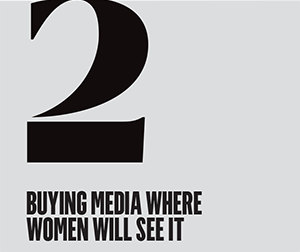
Beer brands like Coors and Anheuser–Busch’s Michelob Ultra are putting ads in places they’ve rarely gone before. Coors is running spots on Bravo, Food Network, HGTV and The Travel Channel, print ads in People, Shape, Women’s Health and Runner’s World, and making digital buys on People.com, WomensHealth.com and Pandora. One would be hard-pressed to find those outlets on either brewer’s list of media buys a decade ago.
“That’s probably how we’re targeting [women]the most,” says Coors‘ Vives. “The message doesn’t change. It’s the same message and the same copy that we air on ESPN as we air on HGTV. The point is that we want to get more women’s eyeballs, that’s really what it comes down to.”
Michelob Ultra—which has grown its female customer base by 10 percent since 2014, according to the company—places ads in women’s magazines including Shape and Women’s Health.
It’s not only beer brands that are changing up their media buys. Fitness and auto marketers have also increased their presence in female-centric media. “More and more people are recognizing the power of women’s purchasing habits,” notes Tim O’Connor, Shape’s publisher.
Of course, historically male-focused brands also reach men via some of these outlets, points out Laura Molen, evp of NBCU’s lifestyle ad sales group, which doesn’t specifically target women but does deliver large female audiences. Advertisers, she says, “are interested in capitalizing on the co-viewing experience of men and women watching lifestyle programming.”
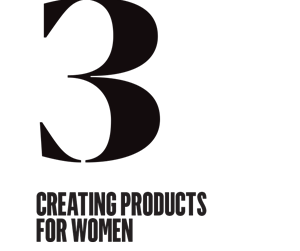
Marketing to women is one thing. But some male-centric brands are also creating products and services designed for women—taking things far beyond the antiquated “pink it and shrink it” thinking.
Take Adidas, which this past February introduced a major brand platform solely with women in mind. The company did its homework and created a range of products for women—including fashionable athleisure, or everything that fits into gym bags. To that end, the company also made a strategic hire in February, tapping former Lululemon CEO Christine Day as an adviser.
“Our women’s initiative has led us to equip female athletes with the kit, so to speak, that’s right for them,” says Lia Stierwalt, senior director of global communications and media at Adidas. “We want to own their gym bag. Creating products specifically for female athletes goes beyond just your traditional playing field outfit.”
For automaker Aston Martin, whose market is traditionally 95 percent male, “the introduction of new products is what will make the brand more appealing to a more diverse group of people,” says Laura Schwab, president of the company’s Americas division. In March, the British luxury nameplate launched the sleek DB11 model, whose interiors and seating positions were designed with women customers in mind. The company also announced the launch of a four-door crossover vehicle in 2019 that it believes will appeal to women.
Last year, Dick’s Sporting Goods introduced a line of women’s fitness apparel in partnership with Carrie Underwood called Calia. It also created a women’s fitness and lifestyle boutique, the Chelsea Collective, reports evp and CMO Lauren Hobart.
For brands like the NFL—which already boasts an audience that’s 46 percent female, representing 18.7 percent growth in the demo over the last decade—it’s not so much about getting women’s attention but about leaning into and serving that base. In 2010, the NFL’s consumer products business got a boost after revamping its women’s apparel.
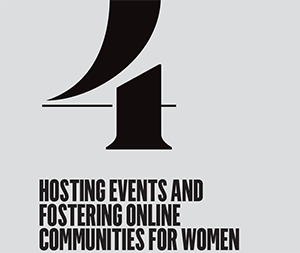
The NFL didn’t just appeal to women by redesigning its clothing line. Around Super Bowl 50 this year, it launched its inaugural Women’s Summit, bringing together notable women across sports, media, government and academia—including Serena Williams, Condoleezza Rice and Robin Roberts—to talk about the positive influence participating in athletics has on the lives of girls and women.
“A lot of people tend to think football is a whole bunch of guys working there, a whole bunch of guys at the clubs, a whole bunch of guys playing the sport. But the reality is that there are tons of women fans, women that work at the NFL, lots of senior women that work in the clubs—and many of our owners are women,” notes NFL CMO Dawn Hudson. With the summit, she says, “we wanted to take advantage of that female power.”
Perhaps the only thing more stereotypically masculine than football is a motorcycle—a fact not lost on Harley-Davidson. But by creating events and online communities for women, the company has worked since 2011 to remake its male-dominated identity. “Sometimes I think we need to be a little extra deliberate and overt about making sure women know they are welcome in the Harley brand,” says Claudia Garber, Harley’s marketing integration manager.
On its website, the company launched a section specifically for women who don’t ride motorcycles, featuring information on how to get started and which bikes might be right for them. The brand also hosts classes and demonstrations to show that anyone can pick up a Harley bike should it fall, no matter their strength or the weight of the bike—something the brand found to be a point of concern for many women who haven’t ridden.
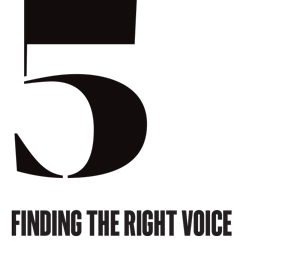
Even as Harley-Davidson has strived to become a more inclusive brand, when it comes to its major marketing efforts, the company has found it’s best to use language and ideas that appeal to all riders rather than bifurcating its messaging by gender.
“If [the only thing the brand did]was come out and just say women are welcome, that’s a corporate person trying to drum up business,” notes Garber. “It’s really about connecting with basic human truths and desires—a desire for adventure, a desire for connection, for escape, for freedom. These are messages that resonate with women as well as men.”
“We didn’t try to deliver some empowerment or ‘You can do it, too!’ type of message,” adds Jason Norcross, partner and ecd at 72andSunny, the shop behind the female-focused campaigns of Adidas and Coors Light. “We’re just so far beyond that. An important thing for any marketer to understand is that we’re past talking to women as women—you have to talk to them as people, talk to them as athletes, talk to them as beer drinkers, talk to them like you would anyone else.”
Storytelling—a hot marketing topic these days—is just as relevant. Says Katherine Wintsch, founder and CEO of The Mom Complex consultancy, which works with companies like Unilever, Johnson & Johnson and Walmart: “Our research shows that women want to laugh, they want a plot and a storyline, and not just someone talking to a camera and showing you how they clean their dining room table.”
 This story first appeared in the April 25, 2016 issue of Adweek magazine.
This story first appeared in the April 25, 2016 issue of Adweek magazine.
